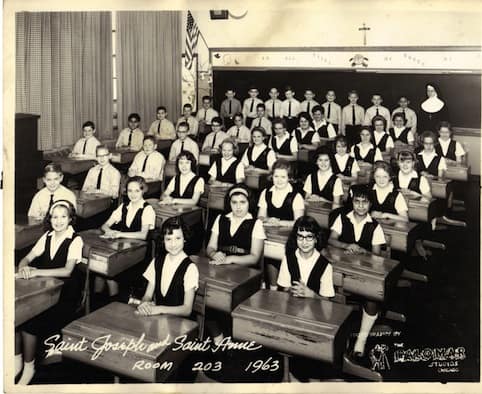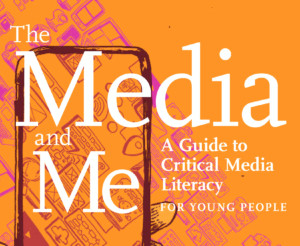7 Social Media Tools To Tell Your Classroom Story

Last month, I finalized my bittersweet decision and retired (for now) from teaching… leaving the computer lab where I would spend most of my week meeting with every student at Holy Cross School from grades Kindergarten to 8th grade for at least one hour each week.
Come this September, I am already anticipating missing the infinite number of “stories” that happen inside the walls of Holy Cross every single day. The stories of students lives in school, whether it be social or learning stories- the important stories I couldn’t wait to share with the other teachers and principal in the hallways or at faculty meetings. Especially, the stories I couldn’t wait to share with parents because I felt so incredibly lucky to spend my days with their children, the smart, creative thinkers with pure hearts and innovative insight who were sharing their learning and thoughts with me!
I know that sometimes, as the school days get long and teacher fatigue sets in, we educators forget that parents, loved ones and members of the community truly want to hear the daily narrative that plays out in classroom. We can’t forget the importance of facilitating learning opportunities is equally as important as sharing them.
Luckily, technology has opened up the floodgates of possibilities for weaving and bestowing the stories of individual classrooms, that sewn together, describe the true American education system. The following are a few suggestions, but every teacher should pick the medium that feels most comfortable for them, and chances are you use one already so no need to stray far:
1. Twitter- great for sharing everyday, even multiple times a day, with quick short updates and links to class resources, assignments, photos, etc. Create a classroom account and even make “tweeter” a classroom job! By the end of the year you will have an chronologic archived journal of every event that happened during the school year. (Edudemic teacher’s guide to Twitter)
2. Facebook– meeting parents “where they are” can often be easy when using Facebook. Set up a group to keep things private for school families only. Still there is a lot of power by sharing publicly, allowing the stakeholders who do not get spend each day at the school truly gain understanding of the culture of the school. (Mashable teacher’s guide to Facebook)
3. Instagram– we all have instant access to cameras these days and pictures truly are worth 1000 words. Capture some moments each day and share them on an instagram account. That simple. Parents, extended family and the school community don’t always need written words to understand what is going on. (Sue Water’s Guide to Instagram )
4. Pinterest– teachers are pretty well known for being prolific users of Pinterest when it comes to lesson plan ideas and sharing. But why not create a class board and pin learning artifacts from whatever is the focus of that day. (Edudemic teacher’s guide to Pinterest)
5. Blogs– If you like to write, pick a blogging platform (if you need help picking a platform, contact me, I will help you get one set up). Write often and keep it updated… even if you don’t have time to log in and post during the school day, keep notes and cut and paste them in later. Add any type of media, pictures, videos, audio… whatever you like. With a blog, you don’t have to pick one medium, you can mash up everything and have an end product that looks like anything from a newspaper, to a magazine, even an interactive website. (Picking the Best Blogging Platform for your classroom)
6. Podcast- My personal favorite suggestion, but, possibly the least popular of the choices… record a regular podcast to share what is happening in your school or classroom. If you want free and easy, download Audioboo, start a channel that your parents, students, etc can subscribe to and instantly record 3 minute audio updates. No more drafts, typing or worrying if parents will read what you are sharing in the correct tone because they will hear it for themselves. If podcasting sounds appealing, there are many ways to record and share but, be warned, podcasting is so fun, it almost has an addicting quality and parents might become huge fans, they’ll be demanding content faster than you can produce it! (Teacher’s Guide to Podcasting)
7. Youtube Channel– video is quickly becoming our number one means of communication. It is an incredible medium to capture all aspects of what is actually happening in the classroom. Video is both ona powerful way of sharing and a powerful way to for teachers to observe and reflect. We can’t always see everything that is happening at the same time, so using a video camera is definitely a 21st century means for documenting, reflecting and developing teaching practice.
Remember, don’t give up if your choice of storytelling doesn’t become accepted and mainstream immediately. We are all, teachers and parents alike, trying to keep up and stay on top of our changing world. But if you stay consistent and share regularly, your audience will come.
Using social media to flatten the walls of a classroom is not taboo and teachers needn’t be afraid to tell their stories. We can’t collectively work to strengthen our education system if we aren’t aware of what is actually happening and what it is our teachers need to be effective. Often, with professional media, we hear too much about the negative. With today’s social media tools, every teacher has the power to tell their own story. We all need to be informed of what is happening inside classrooms because it affects every aspect of society. The power to change the direction of education truly comes from allowing others to share in and become energized by the chronicles of great, effective classrooms!








0 Comments
Leave a Comment
Your email address will not be published. All fields are required.